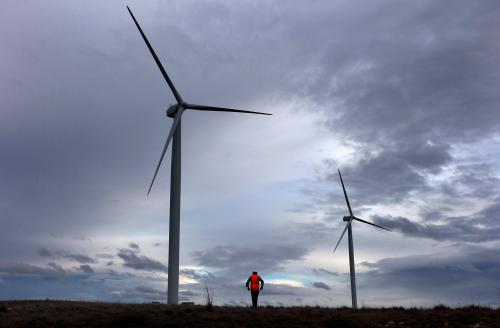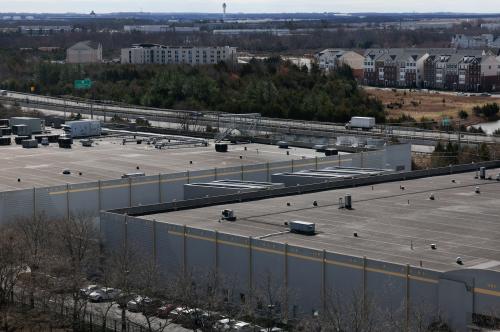Many may remember June 24, 2016 as the day David Cameron resigned from his position as British prime minister after an embarrassing defeat in the referendum on the United Kingdom’s European Union membership—better known as Brexit. But there was another very consequential development for Europe that day, which (understandably) received far less attention in the newspapers: Dutch Minister of Economic Affairs Henk Kamp announced a further reduction in Dutch natural gas production, and it won’t be going up again. The move is in response to popular and parliamentarian pressure following a significant uptick in seismic activity in the country over the last couple of years.
Although the decision by the EU’s largest natural gas-producing country was not a huge surprise—I described about a year ago that it might be forthcoming—reduced Dutch production further reinforces the importance of completing the European internal market. That is essential in order to ensure that imported commodities can be shipped, and used, in all EU member states.
The decision
Minister Kamp has decided to cap Dutch annual natural gas production at 24 billion cubic meters (bcm), based on recommendations from the State Supervision of Mines (SSM) and the Dutch transmission system operator (TSO) Gasunie, among others. That is 3 bcm lower than the cap that is in place for this calendar year, which was announced in December 2015. The Dutch company Nederlandse Aardolie Maatschappij (NAM), which is jointly owned by Royal Dutch Shell and Exxon Mobil, would have preferred a different new cap. NAM had planned for 27 bcm of annual production for this year (in line with the ministerial decision), but had hoped that future production could rise again, up to 33 bcm per year.
This will not happen. The minister has in essence followed the recommendation for the lowest production level, and made a (for him) logical and safe decision. Further reducing natural gas production has full parliamentary support and most importantly satisfies popular demands and hopefully safeguards public safety. SSM had argued that based on recent experiences, fluctuations in gas extraction are believed to increase the chances of earthquakes, as a result of changes in pressure in the large Groningen field. More research is needed to better quantify those chances, but it is believed that production cannot exceed 27 bcm per year. To be on the safe side, SSM recommended a safety margin, leading to its advice of 24 bcm per year. The minister has adopted this production level for the next five years. Because of reduced production and expected low fluctuations (including seasonal swing), it is anticipated that seismic activity too will be reduced.
What’s next?
First, these plans have to be formalized by the minister, which will likely happen in the next couple of weeks.
Practically speaking, the operators (NAM) and regulators now have a clear operational framework. What remains is producing 24 bcm per year, monitoring effects of extraction, and further studying remaining uncertainties. Because the minister outlined the rules for the next five years, the topic can, notwithstanding new concerns, probably disappear from public and parliamentarian discussions. Fortification of houses in the area that has been most affected will continue.
For production in the Groningen field, the only thing that has really changed is the timeline. Natural gas production in the Netherlands has been in decline for a while, particularly when seismic activity increased, starting in 2013. However, many in government and industry initially underestimated the gravity of public concern, and bad public relations (in particular by NAM) turned the issue into a political hot potato, and subsequently moved the timeline substantially forward. Dutch production is now where conventional wisdom dictated it would only be a decade from now.
The Dutch do not consume all their natural gas at home, and a number of long-term export contracts with neighboring countries remain in place. The minister has confirmed that the Netherlands will adhere to these contracts, including when Dutch production will be further reduced in the future. This is because in the three countries that physically import Dutch gas—Germany, Belgium, and France—measures are being taken to prepare consumers for a switch to high caloric gas, rather than the (fairly unique) low caloric gas that comes out of the Groningen field. The Dutch TSO Gasunie has also indicated that increased efficiency and other measures will further reduce natural gas demand in Northwestern Europe going forward, making a transition away from Groningen gas easier to absorb.
Last year, the minister wrote that it would probably be necessary to build an additional nitrogen mixing station (that is required to converge gas qualities to avoid damage to equipment and machineries)—but at the moment, it is uncertain whether that will be built. Alternatively, the major gas storage facility in Bergermeer, owned by Abu Dhabi-based TAQA, could also replace the Groningen field to balance seasonal fluctuations (a role that Groningen historically played, but won’t in the future, as described before). It is not yet clear what approach will be preferred going forward, and how the costs will be divided. These and potential other loose ends are to be negotiated between the various stakeholders in the coming months.
Natural gas production from the Groningen field has now roughly halved over the last three years, and will not return to previous levels. This latest decision, therefore, truly marks the end of an era for the Dutch and for Europe more broadly.
The Brookings Institution is committed to quality, independence, and impact.
We are supported by a diverse array of funders. In line with our values and policies, each Brookings publication represents the sole views of its author(s).








Commentary
The end of Dutch natural gas production as we know it
August 4, 2016